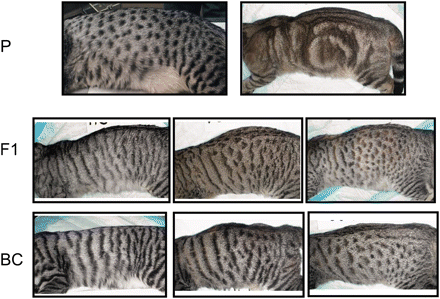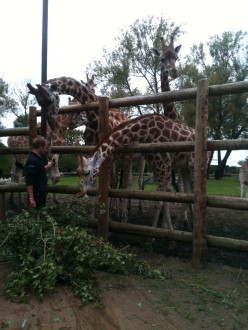An excellent resource in the latest issue of Current Biology – seven reviews on the global genetic history of Homo sapiens, all available FREE. Not all the articles are easy going for the non-specialist, and lay readers might wish to focus on the introductory and concluding paragraphs, but this must surely be the most authoritative publicly available resource on the topic.
The issue opens with a guest editorial by archaeologist Colin Renfrew, summarising the “new synthesis” of genetic, linguistic and archaeological studies that are used to understand the history of our species. Genetics has shown clearly that we did indeed come “out of Africa”, around 70,000 years ago:

A study of 121 ethnically diverse African populations indicated the presence of 14 genetically distinct ancestral population clusters in Africa. Anatomically modern humans evolved in Africa around 200,000 yeas ago, migrated to Eurasia within the last 40000–80000 years and then migrated to the Americas within the last 15000–30000 years. The geographic expansion from Africa is thought to have been accompanied by a population bottleneck and a concomitant loss of genetic diversity. The migration of populations across the globe occurred in many small steps, with each migration event involving a sampling of variation from the previous population. In this figure, decreasing intensity of color represents the concomitant loss of genetic diversity as populations migrated in an eastward direction from Africa. Solid horizontal lines indicate gene-flow between ancestral human populations and the dashed horizontal line indicates recent gene-flow between Asian and Australian/Melanesian populations. (Taken from Current Biology)
Genetics can also show us how we colonised Europe:

This schematic map depicts major migratory events thought to have affected the gene pool of modern Europeans. Black arrows indicate the first settlement by modern humans around 45 thousand years ago (kya). At the end of the last ice age, around 10–15 kya, Europe was re-populated from glacial refugia (red arrows). Around 8–10 kya, Neolithic farmers came to Europe from Anatolia and the Fertile Crescent (green arrows). (Figure by Alessandro Achilli and Antonio Torroni.) Taken from Current Biology.
However, for the moment genetics is less able to resolve issues to do with the last 15-10,000 years, once we had become sedentary. For example, Renfrew writes:
“From a linguistic point of view, it is widely supposed that Proto-Indo-European or early Indo-European language, which is ancestral to Vedic Sanskrit and to most of the languages of North India and Pakistan (but not the Dravidian languages of the south), must have come to the sub-continent during the second millennium BC, presumably associated with some incoming population. But, even leaving linguistic issues aside, molecular genetic indicators for these migrations have not been very clearly identified”
To understand our more recent past, we not only need more data – for example from ancient DNA extracted from bones – we also need to develop new computational tools to be able to model the effects of migration and other changes on genetic and linguistic diversity in human populations. And above all we need to be able to confront these hypotheses with more reliable and unambiguous archaeological data. But for anyone interested in the history of our species, these are exciting times.






